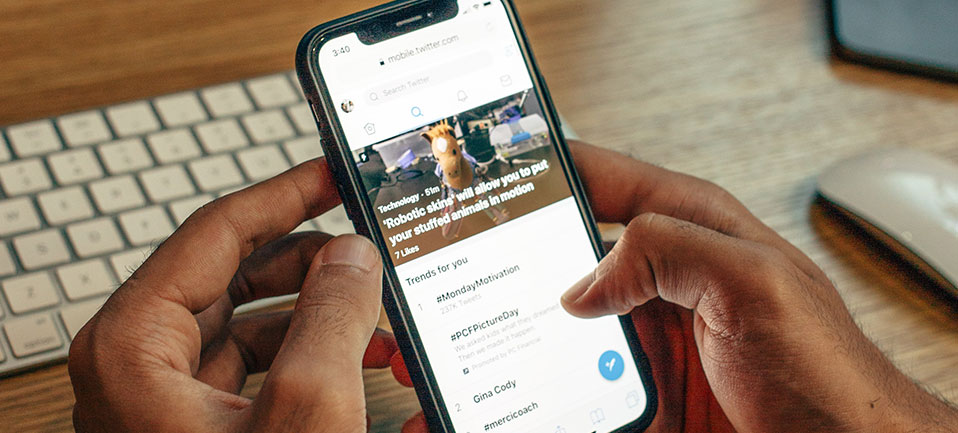What is a Progressive Web App and what are the advantages of using it
Progressive Web Apps (PWA) are websites accessible through mobile browsers but provide a user experience similar to a mobile application. Find out in this post what is a Progressive Web App and what are the advantages of using it.
Knowing that mobile Internet traffic is responsible for more than 55% of total Web traffic makes us realize that mobile applications play a tremendous role in user's daily life. For this reason, most companies want to be online.
But don't be scared! To meet customer needs, you no longer need to have an application that can be too expensive or require too much maintenance.
Progressive Web Apps, unlike native apps, can be used as both a mobile app and a website. They load quickly, operate offline, and work on all platforms.
Read our post and discover the pros and cons of Progressive Web Apps.
What is a PWA?
As we've already said, a Progressive Web App takes advantage of the benefits of a web page and the features of a native application.
Thus, PWAs load just like regular websites but are similar to mobile apps, operate offline and in low-quality networks, and are installable.
PWAs are a type of software delivered over the web, built with technologies like HTML, CSS or JavaScript, but with the look and feel of a mobile app.
Creating a PWA instead of a native app can be very beneficial. Unlike a PWA, a mobile app needs different versions to respond to different operating systems such as Android, IOS, or other less-used ones.
This feature alone can elevate the budget quite a bit since programming for the different operating systems is distinct and arduous.
Because most cell phones can have browsers such as Google Chrome, Firefox, or Safari, by choosing a PWA, you can save resources.
Of course, not all projects are suitable for PWAs. Depending on your goal or the size of the project, it may be preferable to invest in a website and mobile app.
Features of a PWA
We have already listed some of the advantages of a Progressive Web App as budget savings and versatility.
One of the features that stands out most about PWAs is that they don't need to be downloaded to the device to be used, even though it is possible to publish it to app marketplaces.
Not all cell phones abound in storage, and a download may be too heavy for a device. Here is where PWA can become an advantage.
The user can have an experience similar to browsing a mobile app without installing the native application.
In addition, it can make your website fast, installable, reliable, and engaging, which can be beneficial in boosting your brand's visibility to consumers.
Advantages of PWA
PWAs are websites that are progressively enhanced to work as mobile applications installed on supporting platforms, but at the same time work in other browsers as standard websites.
Thus, Progressive Web Apps are remarkable for the following advantages:
- they perform better;
- they do not need to be installed or manually updated. The user can just visit the web address;
- have a wider reach because they are accessible via the browser on computers, smartphones, and tablets.
- support push notifications and periodic updates;
- can be partially used when the device is offline;
- are responsive and work on different screens (mobile, tablet, etc);
- can access hardware functionality;
Disadvantages of Progressive Web Apps
Of course, PWAs also have some disadvantages, mainly on app performance and access to device features. Let's see:
- have hardware and operating system limitations;
- they have weaker performance than mobile apps, especially on IOS;
- they may generate distrust for having a format that the user is not used to seeing;
- consume more battery power than native apps.
Which companies use PWA?
The concept may seem new, but the truth is that PWAs are already quite popular among large companies.
Among those who have already chosen PWAs are companies like Twitter, o Pinterest, Starbucks, or the Washington Post. On both sites, you either can install the app on the home screen of your smartphone, or you can stay on the web with the same features as the native app.
If you are still in doubt about PWAs, consider the example of Trivago. The largest hotel search engine and price comparator have achieved a 150% increase in people adding their Progressive Web App to their home screen. This increase in engagement has generated a 97% growth in hotel offers.
Basic requirements for creating a PWA
While it may be easier to turn your website into a Progressive Web App, you need to meet some requirements.
First of all, your site must have a secure connection. PWAs do not work if it doesn't have an HTTPS connection.
Second, you must have a "service worker", the part of the script that runs in the background that helps determine how to handle network requests to your PWA, making it possible to do more complex work.
Finally, it should contain the "manifest file," a JSON file with information about how your PWA should appear and function.
At Zalox, we can help you transform your company's website and give it the boost it needs to grow. Check out our services on our website.

